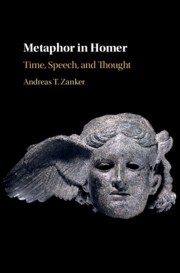Book contents
- Metaphor in Homer
- Metaphor in Homer
- Copyright page
- Contents
- Figures
- Preface
- Note on Texts and Translations
- Abbreviations
- Introduction
- Chapter 1 Ancient and Modern Views on Metaphor in Homer
- Chapter 2 Conceptual Metaphors for Time in Homer
- Chapter 3 Conceptual Metaphors for Speech in Homer
- Chapter 4 Conceptual Metaphors for Mind, Intention, and Self in Homer
- Conclusion
- Book part
- Bibliography
- General Index
- Index Verborum
- Index Locorum
- References
Bibliography
Published online by Cambridge University Press: 29 July 2019
- Metaphor in Homer
- Metaphor in Homer
- Copyright page
- Contents
- Figures
- Preface
- Note on Texts and Translations
- Abbreviations
- Introduction
- Chapter 1 Ancient and Modern Views on Metaphor in Homer
- Chapter 2 Conceptual Metaphors for Time in Homer
- Chapter 3 Conceptual Metaphors for Speech in Homer
- Chapter 4 Conceptual Metaphors for Mind, Intention, and Self in Homer
- Conclusion
- Book part
- Bibliography
- General Index
- Index Verborum
- Index Locorum
- References
- Type
- Chapter
- Information
- Metaphor in HomerTime, Speech, and Thought, pp. 233 - 247Publisher: Cambridge University PressPrint publication year: 2019

